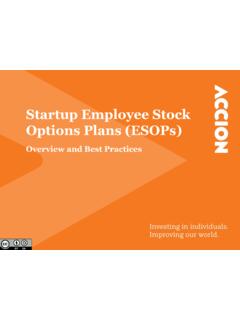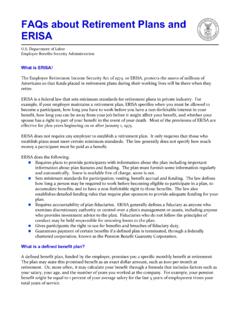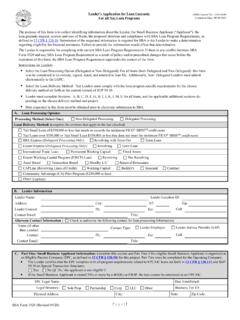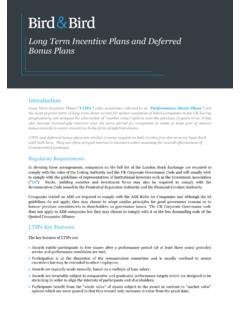Transcription of Instructions for Form 5330 (Rev. December ... - IRS tax forms
1 Userid: CPMS chema: instrxLeadpct: 100%Pt. size: Draft Ok to PrintAH XSL/XMLF ileid: .. ns/i5330/202112/a/xml/cycle03/source(Ini t. & Date) _____Page 1 of 13 13:53 - 22-Dec-2021 The type and rule above prints on all proofs including departmental reproduction proofs. MUST be removed before for form 5330 (Rev. December 2021)Return of Excise Taxes Related to employee Benefit PlansDepartment of the TreasuryInternal Revenue ServiceSection references are to the Internal Revenue Code unless otherwise DevelopmentsFor the latest information about developments related to form 5330 and its Instructions , such as legislation enacted after they were published, go to s NewFiling deadline for section 4971 ex-cise taxes. The filing due date for section 4971 taxes is changed to the 15th day of the 10th month after the last day of the plan filing expected to be available in 2022.
2 Electronic filing of form 5330 is expected to be available in 2022, and the IRS will announce the specific date of availability when the programming comes InstructionsPurpose of FormFile form 5330 to report the tax on: A prohibited tax shelter transaction (section 4965(a)(2)); A minimum funding deficiency (section 4971(a) and (b)); A failure to pay liquidity shortfall (section 4971(f)); A failure to comply with a funding improvement or rehabilitation plan (section 4971(g)(2)); A failure to meet requirements for plans in endangered or critical status (section 4971(g)(3)); A failure to adopt rehabilitation plan (section 4971(g)(4)); Nondeductible contributions to qualified plans (section 4972); Excess contributions to a section 403(b)(7)(A) custodial account (section 4973(a)(3)); A prohibited transaction (section 4975); A disqualified benefit provided by funded welfare plans (section 4976); Excess fringe benefits (section 4977); Certain employee stock ownership plan (ESOP) dispositions (section 4978); Excess contributions to plans with cash or deferred arrangements (section 4979); Certain prohibited allocations of qualified securities by an ESOP (section 4979A); Reversions of qualified plan assets to employers (section 4980); and A failure of an applicable plan reducing future benefit accruals to satisfy notice requirements (section 4980F).
3 Who Must FileA form 5330 must be filed by any of the plan entity manager of a tax-exempt entity who approves, or otherwise causes the entity to be party to, a prohibited tax shelter transaction during the tax year and knows or has reason to know the transaction is a prohibited tax shelter transaction under section 4965(a)(2). employer liable for the tax under section 4971 for failure to meet the minimum funding standards under section employer liable for the tax under section 4971(f) for a failure to meet the liquidity requirement of section 430(j) (or section 412(m)(5) as it existed prior to amendment by the Pension Protection Act of 2006 (PPA '06)), for plans with delayed effective dates under PPA ' employer with respect to a multiemployer plan liable for the tax under section 4971(g)(2) for failure to comply with a funding improvement or rehabilitation plan under section employer with respect to a multiemployer plan liable for the tax under section 4971(g)(3)
4 For failure to meet the requirements for plans in endangered or critical status under section multiemployer plan sponsor liable for the tax under section4971(g)(4) for failure to adopt a rehabilitation plan within the time required under section employer liable for the tax under section 4972 for nondeductible contributions to qualified individual liable for the tax under section 4973(a)(3) because an excess contribution to a section403(b)(7)(A) custodial account was made for them and that excess has not been eliminated, as specified in sections 4973(c)(2)(A) and (B). disqualified person liable for the tax under section 4975 for participating in a prohibited transaction (other than a fiduciary acting only as such), or an individual or his or her beneficiary who engages in a prohibited transaction with respect to his or her individual retirement account, unless section 408(e)(2)(A) or section 408(e)(4)
5 Applies, for each tax year or part of a tax year in the taxable period applicable to such prohibited employer liable for the tax under section 4976 for maintaining a funded welfare benefit plan that provides a disqualified benefit during any tax employer who pays excess fringe benefits and has elected to be taxed under section 4977 on such employer or worker-owned cooperative, as defined in section 1042(c)(2), that maintains an employee stock ownership plan (ESOP) that disposes of the qualified securities, as defined in section 1042(c)(1), within the specified 3-year period (see section 4978). employer liable for the tax under section 4979 on excess contributions to plans with a cash or deferred arrangement, employer or worker-owned cooperative that made the written statement described in section664(g)(1)(E) or 1042(b)(3)(B) and made an allocation prohibited under section 409(n) of qualified securities of an ESOP taxable under section 4979A.
6 Or, an employer or worker-owned cooperative who made an allocation of S corporation stock of an ESOP prohibited under section 409(p) taxable under section employer who receives an employer reversion from a deferred compensation plan taxable under section employer or multiemployer plan liable for the tax under section 4980F for failure to give notice of a significant reduction in the rate of future benefit 22, 2021 Cat. No. 11871 XPage 2 of 13 Fileid: .. ns/i5330/202112/a/xml/cycle03/source13:5 3 - 22-Dec-2021 The type and rule above prints on all proofs including departmental reproduction proofs. MUST be removed before form 5330 and tax payment is required for any of the following. Each year any of the following under Who Must File, earlier, apply: (1), (2), (3), (5), (6), (7), (8), (9), (10), (11), (12), (13), (14), or (16).
7 Each failure of an employer to make the required contribution to a multiemployer plan , as required by a funding improvement or rehabilitation plan under section 432. A reversion of plan assets from a qualified plan taxable under section 4980. Each year or part of a year in the taxable period in which a prohibited transaction occurs under section 4975. See the Instructions for Schedule C, line 2, columns (d) and (e), for a definition of taxable period. When To FileFile one form 5330 to report all excise taxes with the same filing due date. However, if the taxes are from separate plans, file separate forms for each , filing form 5330 starts the statute of limitations running only with respect to the particular excise tax(es) reported on that form 5330 .
8 However, statutes of limitations with respect to the prohibited transaction excise tax(es) are based on the filing of the applicable form 5500, Annual Return/Report of employee Benefit Table 1 to determine the due date of form File form 5558, Application for Extension of Time To File Certain employee plan Returns, to request an extension of time to file. If approved, you may be granted an extension of up to 6 months after the normal due date of form 5558 does not extend the time to pay your taxes. See the Instructions for form To FilePaper forms for filing. form 5330 can be filed on paper. You can obtain the official IRS printed form 5330 found on the IRS website and download it to your computer to print and sign before mailing to the address specified in these Instructions .
9 See Where To File below. You can complete paper form 5330 by hand with pen or typewriter using only blue or black ink. Entries should not exceed the lines provided on the form . You can find form 5330 and its Instructions by visiting the IRS Internet website at !Where To FileFile the paper form 5330 at the following address:Department of the TreasuryInternal Revenue Service CenterOgden, UT 84201 Private delivery services (PDSs).You can use certain private delivery services (PDSs) designated by the IRS to meet the timely mailing as timely filing/paying rule for tax returns and payments. Go to for the current list of designated PDS can tell you how to get written proof of the mailing the IRS mailing address to use if you're using a PDS, go to delivery services cannot deliver items to boxes.
10 You must use the Postal Service to mail any item to an IRS box and PenaltiesInterest. We are required by law to charge interest when you do not pay your liability on time. Generally, we calculate interest on any unpaid balance from the due date of your return (regardless of extensions of time to file) until you pay the amount you owe in full, including accrued interest and any penalty charges. Interest on some penalties accrues on any unpaid balance from the date we notify you of the penalty until it is paid in full. Interest on other penalties, such as failure to file a tax return, starts from the due date or extended due date of the return. Interest CAUTION!Excise Tax Due DatesIF the taxes are due under section.
















